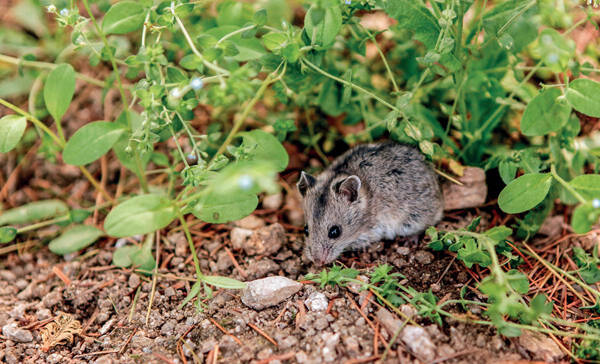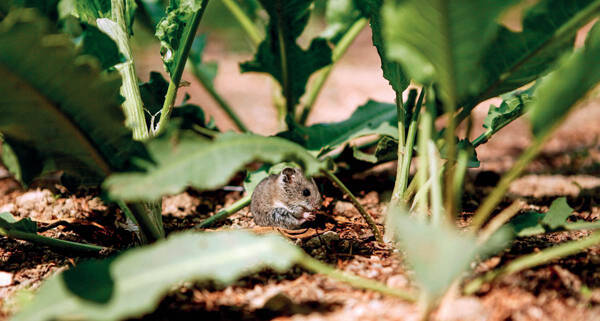Cricetulus barabensis
IUCN
LCBasic Information
Scientific classification
- name:Cricetulus barabensis
- Scientific Name:Cricetulus barabensis,Spotted hamster, patterned hamster, moving hamster, cheeked hamster, Chinese hamster
- Outline:Rodents
- Family:Rodentia Cricetidae Cricetidae
Vital signs
- length:80-110mm
- Weight:20-35g
- lifetime:2-2.5years
Feature
Small in size, stout and short in appearance, with a relatively round head, a short and blunt snout, and short and round ears with white edges.
Distribution and Habitat
In China, it is widely distributed in the north, including the three northeastern provinces, Inner Mongolia, Shanxi, Shaanxi, Hebei, Henan, Shandong, Anhui, Tianjin, Beijing, Ningxia, Gansu, etc. Abroad, it is distributed in Russia, Mongolia, and the Korean Peninsula.
The black-lined hamster mainly lives in the wild, and its caves are mostly built on ridges, ditches, and ridges above the water surface. The habitat is very wide, especially in sandy soil. It is found throughout grasslands, mountains, plain farmlands, sparse forests, etc., and the caves are mainly built in ditches, roadsides, ridges, well platforms, earth slopes, graves and other dry environments with higher terrain. Generally, they do not move into farmers' homes, and they are mostly active in cultivated land, roadsides, wastelands, etc.
Appearance
Hamsters are medium-sized and have cheek pouches (used for storing physical objects). The average body length is about 100mm (80-110mm), and the tail length is shorter than 30mm (average 22mm), but longer than the hind feet (average 17mm). The most striking feature is that there is an obvious black line in the center of the back, and there is no dense hair on the soles of the feet (the Can's hairy-footed mouse also has a black line on the back, but the hair on the soles of the Can's hairy-footed mouse is dense, and the tail length is less than 14mm , shorter than the length of the hind legs). The ears are gray and black with white edges. On the teeth, the first upper molar is composed of two longitudinal rows and three transverse ridges; the second upper molar is composed of two longitudinal rows and two transverse ridges; the long and short diameters of the third upper molar are almost the same.
Details
The black-lined hamster belongs to the subfamily Cricetinae. The taxonomic status of this species is stable, but the subspecies are relatively confusing. There are as many as 6 subspecies in my country. Whether they are all valid needs further study. It is a common species in the arid and semi-arid areas of northern my country, and also appears in the farmland ecosystem of the region. After being tamed, it is not much different from other hamster species and can be used as a pet.

The black-lined hamster is a nocturnal rodent. Except for the autumn grain storage season, it generally does not leave the cave during the day. They are active before dawn and after dusk, and are most active between 19:00 and 21:00. In summer and autumn, before the rainy season, black-lined hamsters go out of their holes to look for food in advance, and their capture rate is higher than normal. Black-lined hamsters use cheek pouches to carry food into their holes. Their activity distance is generally no more than 200 meters. The range of their nests is mostly within 22.5 mu, and the maximum is no more than 75 mu. The activity range of female hamsters is smaller than that of male hamsters. Black-lined hamsters also store a small amount of wheat grains in summer, and the stored grain is scattered in multiple storage rooms in autumn.
They mainly eat crop seeds. The cheek pouches of 32 black-lined hamsters were dissected, and the main contents were soybeans, mung beans, wheat, peanuts, grass seeds, and beetles. The main contents were crop seeds, accounting for 100% of the frequency, while the frequency of grass seeds was 15.6%, and the frequency of beetles was only 3.1%. Dong Qian et al. (1966) reported that the frequency of grass seeds in the cheek pouches of black-lined hamsters in the Luda area was 65.35%, and the frequency of crop seeds was only 25.99%. Wang Qishan (1962) dissected the stomachs of 11 rats in the Hefei area; among them were sweet potatoes, flour, bean cakes, wheat grains, rapeseed, bran grains, etc., indicating that some individuals moved into residential areas in winter, fed on human food, and tended to like oil crops. The above shows that the food composition of black-lined hamsters has changed due to different regions and environments.
The caves of black-lined hamsters are mostly built in dry farmland, ridges, graveyards, wastelands, etc. Each cave has 2~3 holes, the diameter of the hole is mostly about 2.5~3 cm, the hole is smooth and round, and there is no stolen manure at the hole. After entering the hole, it goes vertically downward about 10~15 cm, and then goes diagonally downward. The total length of the tunnel is about 2~3 meters. There are 1~2 warehouses and nests in the cave. The grain stored in the warehouse is mostly 0.5~1 kg. The nest is bowl-shaped, with a diameter of 10×10 cm, and the depth of the nest is mostly 0.5~1 meter from the ground. Zhao Kentang et al. (1979) reported that the nest of the Inner Mongolia black-lined hamster can reach a depth of about 2.5 meters from the ground, which may be related to the temperature.

Black-lined hamsters do not hibernate. They are generally sexually mature at 8 weeks of age, and the most suitable age for reproduction is 12 weeks of age. The estrus cycle is 3 to 7 days (average 4.5 days). The estrus cycle can be divided into proestrus, estrus, metestrus and rest period. The proestrus lasts for about half a day. The vulva mucosa is pink or red, moist and loose, and easy to pull apart. During this period, female and male mice are willing to approach each other, and female mice often revolve around male mice. During the estrus period, the vulva is further congested and dark red, and the clitoris is dark red or purple. During this period, female mice are active frequently, often lift their tails, and are easy to mate. The estrus period of female mice generally occurs at dusk. If the light is artificially controlled, estrus can occur 2 to 3 hours after darkness. In the late estrus period, the congestion and swelling of the vulva and clitoris of female mice disappear quickly, and the female mice no longer lift their tails. Male and female mice often fight. During the rest period, the vaginal opening is slightly open or closed, the vulva becomes dull and pale, and the female mice become very fierce during this period. The conception rate is high when mating is performed from dusk to 10 pm.
The gestation period of the black-lined hamster is 20 to 21 days, with an average of 20 days and 14 hours. The lactation period is 21 days. The ratio of male to female litters is 47.4:52.6. The weight of newborn pups is 1.5 to 2.5 grams, and that of adult rats is 30 to 40 grams. Newborn pups are hairless and have closed eyes, and grow fur at 3 to 4 days old. At 7 days old, the whole body is covered with fur, and at 10 to 14 days old, the eyes are open and the hearing is available. At 1 month old, the testicles of male rats descend from the abdominal cavity to the scrotum. The life span of the black-lined hamster is 2 to 2.5 years.
The black-lined hamster exhibits obvious seasonal breeding characteristics, breeding in spring and summer and stopping in winter. There are two breeding peaks in March-April and August-September each year. There are 3-5 litters each year, with an average of 4-9 pups per litter, but 6 pups are the most common. Most of the rats born in the first breeding peak participate in breeding that year, and the rats born later participate in breeding after wintering.
The black-lined hamster is a major agricultural pest. Each rat can consume about 2kg of food per year. They have a strong reproductive capacity and a habit of storing a large amount of food, so they waste a lot of food. Sometimes they also steal seeds sown in the soil and bite seedlings. They are extremely harmful to crops. The black-lined hamster is also a natural transmitter of epidemic hepatitis and tick-borne typhus pathogens. In the early 1940s, plague bacteria were first detected from black-lined hamsters in Inner Mongolia, China. Black-lined hamsters in many places such as Jilin and Hebei were found to be naturally infected with plague.
This species is listed in the 2013 Red List of Endangered Species of the World Conservation Union (IUCN) ver3.1--Vulnerable (VU).
It has been included in the "List of Terrestrial Wildlife with Important Economic and Scientific Research Value under State Protection" issued by the State Forestry Administration of China on August 1, 2000.








